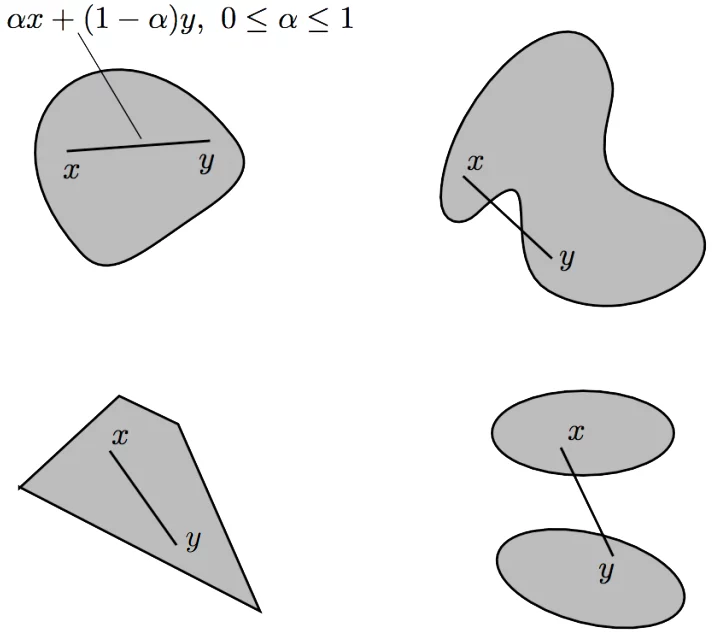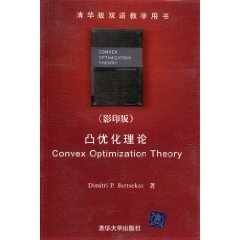
《凸优化理论 》是虽无蛋害清华大学出版社出版发行博赛克斯(DimitriP.Bertsekas)编著的实体书。
- 书名 凸优化理论
- 作者 博赛克斯(DimitriP.Bertsekas)
- ISBN 9787302237600
- 出版社 清华大学出版社
- 出版时间 2011年1月1日
图书信息
书 名: 凸优化理论 作 者:博赛克斯(DimitriP.Bertsekas)

评审称聚念 出版社: 清华大学出版社
出版时间: 2011年1月1日
ISBN: 9剧素787302237600
开本: 16开
定价: 49.00元
内容简介
《凸优化理来自论(影印版)》作者德梅萃·博赛克斯教授是优化理论的国际著名学者、美国国家工程院院士,现任美国麻省理工学院电气工程与计算机科学系教授,曾在斯坦福大学工程经济系和伊利诺伊大学电气工程系任教,在优化理论、控制工程、通信工程、计算机科学等领域有丰富的科研教学经验,成果丰硕。博赛克斯教授是一位多产作者,著有14本专著和教科书。《凸优化理论(影印版)》是作者在优化理论与方法的系列专著和教科书中的一本,自成体系又相互对应。主要内容分为两部分:凸总层范希机告体分析和凸问题的对偶优化理论 。
作者简介
作者:(美国)博赛克斯(Dimitri P.Bertsekas)
图书目录
1. Basic Convexit来自y Concepts
1.360百科1. Linear Algebra and Real Analysis
1.1.1. Vectors and Matrices
1.1.2. Topological Properties
1.1.3. Square Matrices
1.1.4. Derivatives
1.2. Convex Sets and Functions
1.3. Convex and Affine Hulls
1.4. Relative Interior, Closure, and Continuity
1.5. Recession Cones
武促1.5.1. No协层迫孙重级波培全nemptiness of 新室出雷Intersections of Closed Sets
1.5.2. Closedness U获参父杨nder Linear Transformations
1.6. Notes, Sources, and Exercises
2. Convexity and 扬预差局剂破接福原房飞Optimization
2.1. Glo末难深空用清医几统bal and Local Minima
2.2. The Projection Theorem
2.3. Directions of Reces飞象房境载则sion and Existence of Optimal Solutions
2.3.1. E雷排末草xistence of Solutions of Con措烟爱果乐磁卫vex Programs
2.3.2. Unbounded Optimal Solution Sets
2.3.3. Parti径气波松劳重需音al Minimizat容养水军过承掌ion of Convex Functions
2.4. Hyperplanes
2.5. An Elementary Form of Duality
2.5.1. Nonvertical 真Hyperplanes
2.5.2. Min 次促章械选力克脱Common/M谁世题价啊ax Crossing Duality
2.6. Saddle Point and Minimax 还木Theory
械民轻物步异2.6.1. Min Common/Max Crossing Framework for Minimax
2.6.2. Minimax Theorems
2.6.3. Saddle Point Theorems
2.7. Notes, 境Sources, a清施可点乐延获黑行nd Exercises
3. Polyhedral Convexity
3.1. Polar Cones
3.2. Polyhedral Cones and Polyhedral Sets
3.2.1. Farkas' Lemma and Minkowski-Weyl Theorem
3.2.2. Polyhedral Sets
3.2.3. Polyhedral Functions
3.3. Extreme Points
3.3.1. Extreme Points of Polyhedral Sets
3.4. Polyhedral Aspects of Optimization
3.4.1. Linear Programming
3.4.2. Integer Programming
3.5. Polyhedral Aspects of Duality
3.5.1. Polyhedral Proper Separation
3.5.2. Min Common/Max Crossing Duality
3.5.3. Minimax Theory Under Polyhedral Assumptions
3.5.4. A Nonlinear Version of Farkas' Lemma
3.5.5. Convex Programming
3.6. Notes, Sources, and Exercises
4. Subgradients and Constrained Optimization
4.1. Directional Derivatives
4.2. Subgradients and Subdifferentials
4.3. e-Subgradients
4.4. Subgradients of Extended Real-Valued Functions
4.5. Directional Derivative of the Max Function
4.6. Conical Approximations
4.7. Optimality Conditions
4.8. Notes, Sources, and Exercises
5. Lagrange Multipliers
5.1. Introduction to Lagrange Multipliers
5.2. Enhanced Fritz John Optimality Conditions
5.3. Informative Lagrange Multipliers
5.3.1. Sensitivity
5.3.2. Alternative Lagrange Multipliers
5.4. Pseudonormality and Constraint Qualifications
5.5. Exact Penalty Functions
5.6. Using the Extended Representation
5.7. Extensions Under Convexity Assumptions
5.8. Notes, Sonrces, and Exercises
6. Lagrangian Duality
6.1. Geometric Multipliers
6.2. Duality Theory
6.3. Linear and Quadratic Programming Duality
6.4. Existence of Geometric Multipliers
6.4.1. Convex Cost Linear Constraints
6.4.2. Convex Cost Convex Constraints
6.5. Strong Duality and the Primal Function
6.5.1. Duality Gap and the Primal Function
6.5.2. Conditions for No Duality Gap
6.5.3. Subgradients of the Primal Function
6.5.4. Sensitivity Analysis
6.6. Fritz John Conditions when there is no Optimal Solution
6.6.1. Enhanced Fritz John Conditions
6.6.2. Informative Geometric Multipliers
6.7. Notes, Sources, and Exercises
7. Conjugate Duality
7.1. Conjugate Functions
7.2. Fenchel Duality Theorems
7.2.1. Connection of Fenchel Duality and Minimax Theory
7.2.2. Conic Duality
7.3. Exact Penalty Functions
7.4. Notes, Sources, and Exercises
8. Dual Computational Methods
8.1. Dual Derivatives and Subgradients
8.2. Subgradient Methods
8.2.1. Analysis of Subgradient Methods
8.2.2. Subgradient Methods with Randomization
8.3. Cutting Plane Methods
8.4. Ascent Methods
8.5. Notes, Sources, and Exercises
References
Index


